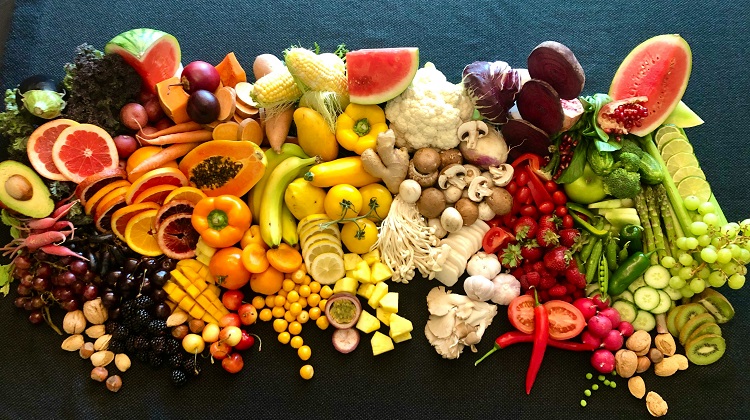Fruit and vegetable delivery service

Title of Business: Fresh Produce Delivery Service
Type: Trading
Key Products for Sale:
- Seasonal fruits (e.g., mangoes, bananas, avocados)
- Fresh vegetables (e.g., spinach, kale, tomatoes, carrots)
Technology Considerations:
- Mobile-friendly e-commerce platform or app for placing orders.
- Inventory management system to track stock levels and orders.
- GPS-enabled delivery tracking system.
- Social media for marketing and customer engagement.
Market for the Products:
- Urban and suburban residents who prefer the convenience of home delivery.
- Health-conscious consumers seeking fresh, high-quality produce.
- Busy professionals with limited time to shop for groceries.
- Restaurants and small food businesses needing a consistent supply of fresh produce.
Key Inputs into the Business:
- Materials: Fresh produce sourced from local farms.
- Labour: Staff for sourcing, packing, and delivering orders.
- Equipment: Delivery vehicle (e.g., motorbike or small van), packing materials (e.g., crates, boxes), mobile devices for order management.
Product Preparation Process:
Sourcing: Establish relationships with local farmers for fresh produce.
Packing: Sort, pack, and label produce in eco-friendly packaging.
Delivery: Schedule and execute timely deliveries to customers’ doorsteps.
Quality Considerations:
- Ensure produce is fresh and of high quality.
- Maintain proper hygiene and handling during packing and delivery.
- Use sturdy, eco-friendly packaging to protect produce during transport
- Regularly update inventory to reflect seasonal availability and freshness.
Cost of Investment:
- Transportation: ranges between ksh10,000 and 20,000 (for motorbike or small van)
- Initial Stock: ranges between ksh 5,000 and 10,000 (for the first batch of produce)
- Packaging Materials: ranges between ksh 1,000 and 2,000
- Marketing: ranges between ksh 1,000 and 3,000
Miscellaneous Costs (licenses, permits): ranges between ksh 2,000 and 5,000
Total Estimated Initial Investment: ranges between ksh19,000 and 40,000
Required Operational Infrastructure:
- Reliable transportation for timely deliveries.
- Secure storage space to keep produce fresh before delivery.
- Online platform or app for managing orders and customer interactions.
- Efficient logistics and delivery management system.
Most Suitable or Viable Location for the Business:
- Urban and suburban areas with high population density and demand for home delivery services.
- Proximity to local farms to ensure fresh produce supply.
Potential Sources of Investment Capital:
- Personal savings
- Small loans from family or friends
- Microfinance institutions
- Crowdfunding platforms
- Local government grants or subsidies for agricultural businesses
Requirements for Effective Management:
- Strong sourcing and negotiation skills to secure quality produce at competitive prices.
- Effective inventory management to ensure availability and minimize waste.
- Marketing expertise to build brand awareness and attract customers.
- Customer service skills to maintain high customer satisfaction.
- Basic accounting skills to manage finances and profitability.
Role of Mobile Phone and ICT in the Business:
- Mobile-friendly e-commerce site or app for placing orders and managing subscriptions.
- Social media platforms for marketing and customer engagement.
- Mobile payment systems like M-Pesa for easy transactions.
- GPS-enabled delivery tracking system to optimize routes and ensure timely deliveries.
Statutory Regulations and Licenses:
- Business registration with the relevant local authorities.
- Food handling certification from the local health department.
- Compliance with local health and safety regulations.
Necessary permits for delivery and logistics operations.
Pricing:
- Seasonal Fruit Box: KSh 500 – 1,500 per box (depending on size and variety)
- Fresh Vegetable Box: KSh 500 – 1,500 per box (depending on size and variety)
- Subscription Discounts: Offer discounts for weekly or monthly subscriptions.
Profitability:
- Convenience-focused business model ensures a loyal customer base.
- High demand for fresh, quality produce with the potential for repeat customers.
- Ability to scale by increasing delivery areas and product variety.
- Potential for high-profit margins with efficient sourcing and delivery operations.
Next Steps to Take:
- Conduct market research to identify the target customer base and preferred produce.
- Establish relationships with reliable local farmers and suppliers.
- Develop a strong online presence with a user-friendly e-commerce platform or app.
- Secure initial investment for transportation, initial stock, and marketing.
- Launch a marketing campaign to attract the first batch of customers.
- Continuously gather customer feedback to improve offerings and service.
- Explore partnerships with local restaurants and small food businesses for bulk orders.

